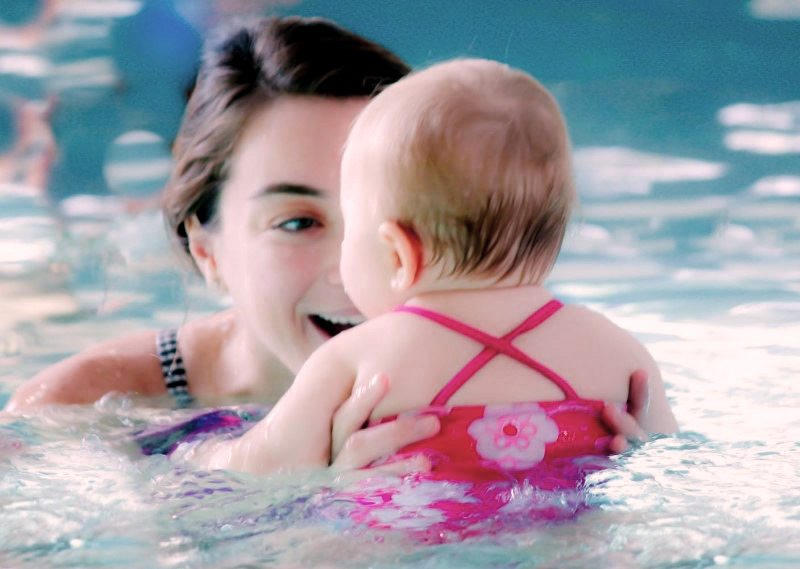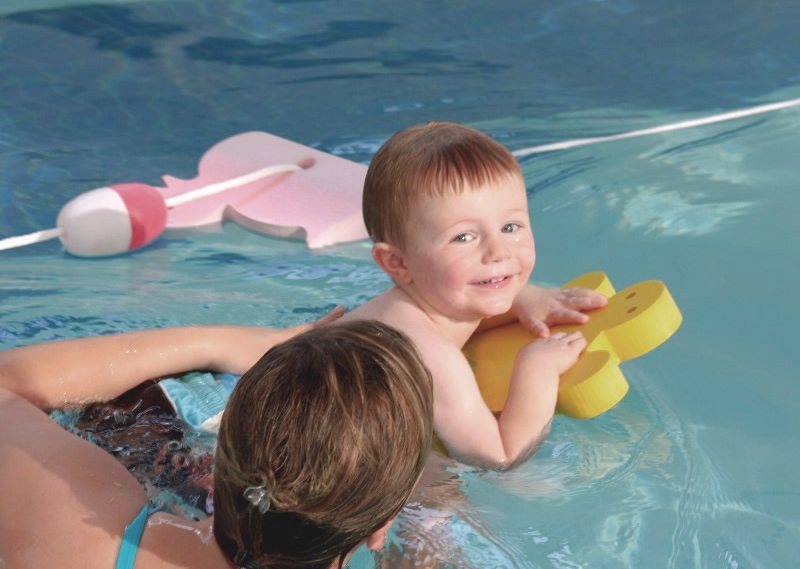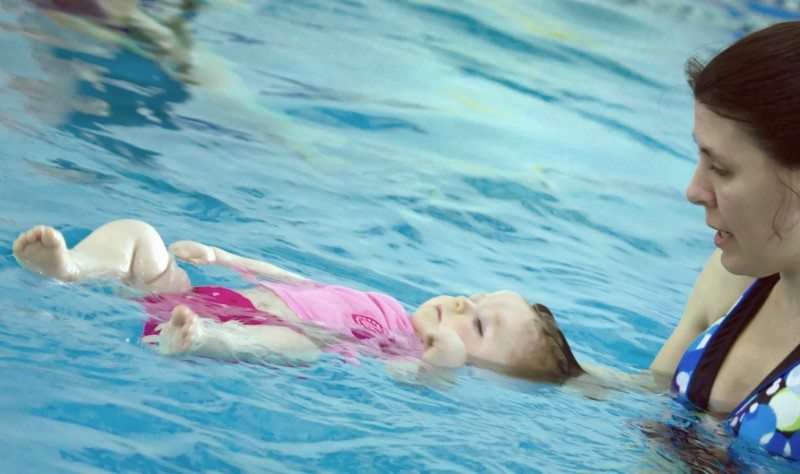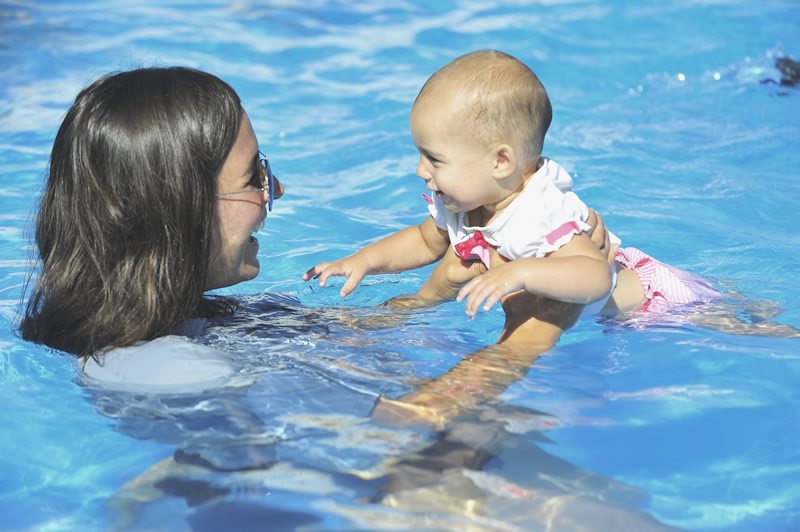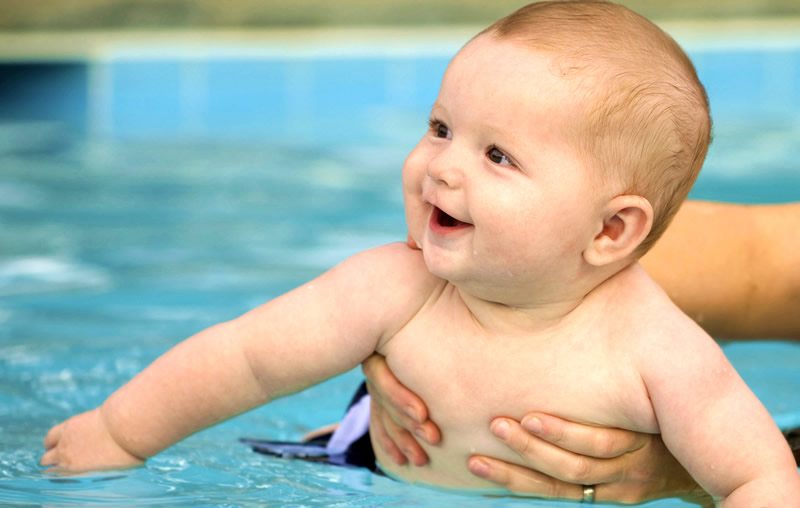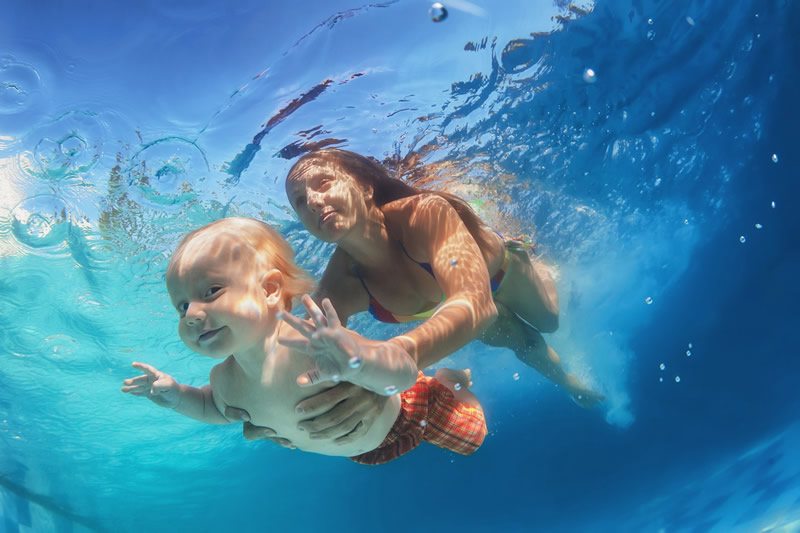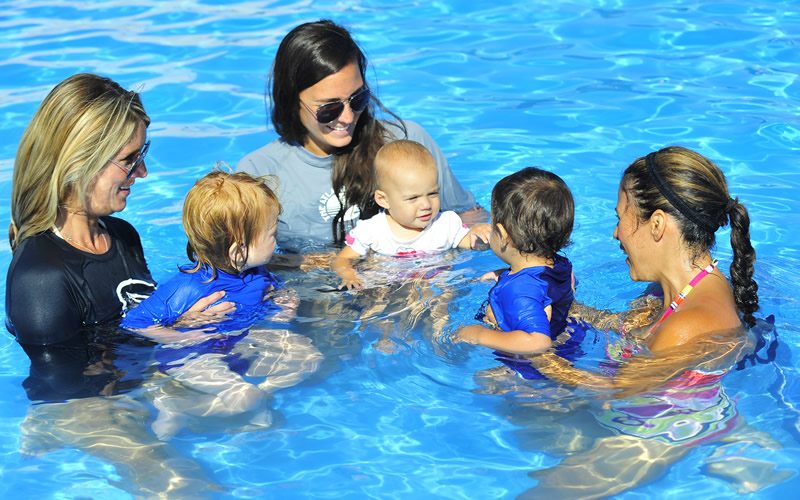Water Babies Program
What to Expect: 3 Months Up to 24 Months
Introduction and acclimation to the water and the swimming lesson environment. The goal is to achieve a relaxed demeanor for both children and their caregivers. Babies will be introduced to developing breath control and coordination for important swimming positions and safety techniques, while eventually preparing them to transition into our preschool level classes, without caregiver participation.
Breath Control
Involuntary shut off of breathing will be demonstrated for babies under 6 months and practiced by gently pouring water over children’s heads as an introduction to water submersions. Ages 6 months and older will continue to work on their breath control becoming voluntary through pouring water over their heads and practicing water submersions.
Balance & Buoyancy
Proper swimming positions, submersion and safety techniques will be demonstrated and practiced. As children grow in our water babies program, they learn to become more aware of their buoyancy through floating and submersions.
Movement
Movement develops as breath control and balance control are gained. Controlled motions stimulate neurological connections which aid in the development of learning.
Breath Control
Involuntary shut off of breathing will be demonstrated for babies under 6 months and practiced by gently pouring water over children’s heads as an introduction to water submersions. Ages 6 months and older will continue to work on their breath control becoming voluntary through pouring water over their heads and practicing water submersions.
Balance & Buoyancy
Proper swimming positions, submersion and safety techniques will be demonstrated and practiced. As children grow in our water babies program, they learn to become more aware of their buoyancy through floating and submersions.
Movement
Movement develops as breath control and balance control are gained. Controlled motions stimulate neurological connections which aid in the development of learning.
Once Your Child Turns Two Years Old
Once your child turns two, we encourage a preschool level class, where the child can begin to learn important safety and swimming techniques separate from the caregiver, with the support and guidance of our teacher and lifeguards.
However, if the child and caregiver believe a water babies class is the best fit for their family, a child can participate in the water babies class until they are comfortable progressing into the preschool level class.
An experienced water baby may show readiness to transition to the preschool level class as early as 21 months of age. This can be discussed with the manager, teacher, and caregiver in order to provide the most beneficial learning path for the child.
Once your child turns two, we encourage a preschool level class, where the child can begin to learn important safety and swimming techniques separate from the caregiver, with the support and guidance of our teacher and lifeguards.
However, if the child and caregiver believe a water babies class is the best fit for their family, a child can participate in the water babies class until they are comfortable progressing into the preschool level class.
An experienced water baby may show readiness to transition to the preschool level class as early as 21 months of age. This can be discussed with the manager, teacher, and caregiver in order to provide the most beneficial learning path for the child.
Our Philosophy “Learn to Float”
Our approach to teaching is Zen inspired with goals focused on achieving balance and oneness with the water. Once our swimmers “discover their buoyancy” they will develop a more efficient approach to swimming.
How Learning Takes Place
Swimming is a physical learning experience. Movement helps develop neurological connections in the synapses of the brain. Children learn best by interacting with their environment. Water Babies I and II is specifically designed to coincide with the child’s developmental readiness. Water acclimation and adaption take place through continued practice. Year round lessons yield optimum results.
Cognitive Development
Cognitive, physical and social skills are developed providing a building block for learning. Aquatic motions stimulate neurological connections which aid in brain development. Babies natural aquatic reflexes become controlled swimming actions.
Physical Development
Swimming and water play is a multi-sensor activity that engages sight, sound and touch as well as a baby’s sense of balance, muscular movements and pressure. Baby swimmers have better balance and are also better at grasping things than non-swimmers.
Social Development
Swimming children are more willing to make contact and adjust themselves better in groups of contemporaries. They are more independent and less timid. They can cope with new and strange situations better. Skin to skin contact promotes a healthy parent-child bond.
What You Need for Class
- Suits for both you and your baby
- Swim diapers (Disposable and then a reusable one over top. Both can be purchased online or in any baby store.)
- Towels
- Comfy, easy clothes to change into for both you and the baby
How to Prepare for Your Water Babies Class
During Bath Time
Acclimate your baby to the water during bath time. Help them float on their back for a few moments at a time while carefully supporting their head to keep their face from going under the water.
Talk and sing to them while they float so that they hear what your voice sounds like with their ears in the water. Ears should be all the way in or all the way out to avoid that uncomfortable splashing.
Gently pour water over their head and face while in the tub. This will trigger the involuntary shutoff of their breathing reflex. You should notice that they are naturally catching their breath as the water flows over their face.
Although we count on on babies’ ability to use their natural reflexes, through gradual progression and repetition we train our Water Babies to control their breathing before they go underwater.
Shower Time
Bring your baby in the shower with you. Allow the warm water to splash first on their back and then use your hand to guide the water over their face.
Make sure you sing, smile, laugh and use varied intonations during this experience to help create that positive, loving atmosphere in an otherwise potentially overwhelming one.

